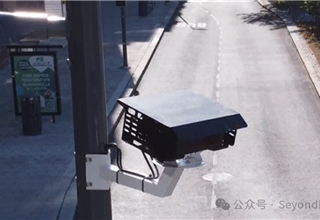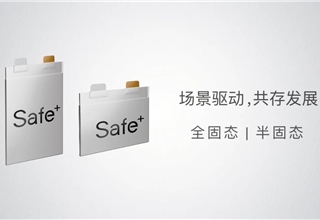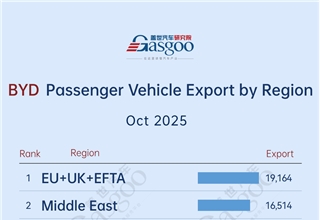One of the cornerstones of the free enterprise system is that competition is good for the consumer. In the case of auto parts, consumers--both do-it-yourselfers (DIY) and professional service dealers--have plenty of sources competing for their parts dollars. But as the parts business changing, shop owners are faced with new choices and challenges in dealing with both suppliers and consumers.
Some of the major trends in the parts market have been going on for more than a decade. The number of jobbers has declined, but retail parts store chains have come on strong. According to the Automotive Parts and Accessories Association (APAA), the number of traditional parts jobbers has dwindled from 31,400 in 1980 to 22,900 in 1995. National retail part store chains have captured much of the DIY market and some of these chains are getting into the wholesale (selling to shops) side of the market.
But one trend is positive for shop owners--the DIY market is considered to be low in growth, or even shrinking. According to James Lang, president of Lang Marketing Resources in Wyckoff, N.J., a firm specializing in automotive aftermarket research, the share of aftermarket parts sales to DIY has declined about 5 percent in the last seven years. The main reasons are the complexity of modern cars and the fact that the populous "Baby-Boom" generation of DIY are getting older. The trend means parts suppliers of all types will be focusing more on selling to the professional service market, says Lang.
"The point of competition is the sale to the installer," said Lang.
Shop owners too, believe significant DIY growth is not likely. According to Don Seyfer, chairman of the Automotive Service Association (ASA) and owner of a mechanical repair shop in Wheat Ridge, Colo., modern vehicles are often too complex for a DIY. Even maintenance work that is fairly simple takes too much time for consumers.” he added.
"People do not have much free time and maintaining a car properly can be time-consuming," said Seyfer.
The rise of program distribution groups is also providing shops with more choices. Organizations such as Big A, CARQUEST and NAPA now provide many value-added marketing and management support services to shops, and program groups such as these encompass most of the traditional jobber population today. In fact, by the end of this year, these three companies and their affiliated jobbers alone will number about 11,300 stores.
Other trends abound. Specialty warehouse distributors who often sell directly to shops are gaining market share. According to Automotive Marketing magazine, service bays among the top 100 auto parts chains totaled 10,279 in 1995, a gain of 4,001 since 1990.
Independent shop owners will benefit from the increased competition for their business, say those in the parts business. And though shop owners recognize this, there are concerns about parts stores getting into the service business, and about consumers who want bargain retail prices for parts that are professionally installed.
The Wholesale Market
Retail parts store chains are increasingly competing for the sale of parts to professional service shops. Pep Boys began a parts catalog aimed at the service professional two years ago and is launching a new line of stores--Parts USA--that will not have service bays or tire sales. On the other hand, Pep Boys recently launched a television ad campaign that takes a negative swipe at independent repair technicians.
The most high-profile move by a retail chain was the recent acquisition of ALLDATA, a repair information company, by AutoZone. AutoZone is already test marketing sales and delivery of parts to service dealers at more than 300 of its 1,200 stores. According to an AutoZone statement, the purchase of ALLDATA will enhance the ability to provide diagnostic information to DIYs through AutoZone electronic parts catalog.
According to Arnold Gold, vice president of marketing for ALLDATA, AutoZone has no plans to make the ALLDATA system available to DIY customers at AutoZone stores. However, ALLDATA does plan to sell CD-ROMs specific to the year, make and model of a vehicle to DIYs through various parts stores, including AutoZone. These CDs will contain repair procedures, electrical schematics and a technical service bulletin (TSB) option, but no parts and labor information. Priced at about $25 to $40, the CDs will compete with the type of manuals that have long been sold to DIYs by companies such as Hanes and Chilton.
Though it remains to be seen if the big retailers are successful in appealing to shops, or in sustaining the DIY market, observers on the more traditional side of the parts business take the efforts of the retailers seriously.
"Retailers recognize that the majority of the market, about 70 percent, flows through the professional service dealer. That is a very attractive number for retailers," said Chris Romeis, vice president of marketing for Big A.
According to Steve Handschuh, NAPA vice president of wholesale markets, part suppliers will be looking to promote their ability to provide repair information to service dealers.
"It is apparent to us that having access to diagnostic information is going to be a strategic selling point in the future," said Handschuh.
According to Tom Easton, vice president of sales and marketing for CARQUEST, all this competition is good for the service dealer. "I think competition brings improvement, whether competition from retailers or among program groups."
Program distribution groups typically involve warehouse distributor (WD) member companies that group together for buying, logistical or marketing reasons. The program groups have affiliated jobbers who buy from them and group companies or members also own a considerable number of jobber stores. The program groups offer marketing and management support to their affiliated jobbers, and increasingly, are offering programs designed for service dealers.
Big A, for instance, provides a "Big A Service Pro" program to shop owners that offers items such as an exterior design package, a shop management software program, seminars and other features. CARQUEST and other groups, such as Bumper to Bumper, also have similar programs for shops. According to Romeis, these programs help independent shops compete against chains.
"The bar for service dealers has been raised in some ways by national service chains. We are trying to provide the independent shop owners with some of the same support national chains provide to their stores," said Romeis.
NAPA Auto Care Program is the most well known of these programs and involves more prominent signage than most other programs. The Auto Care Program has grown from 1,500 shops at the end of 1990, to 6,700 shops today, with a goal of 7,500 shops by the end of 1996.
Handschuh disagrees with the notion that participation in Auto Care in any way diminishes the value of organizations such as ASA. NAPA encourages ASA membership, as do other program groups such as Big A and CARQUEST. All three groups are also supporters of the Automotive Service Association Management Institute (ASAMI) and insist their service dealer programs complement shop involvement with industry organizations.
Program groups, through their WD members and distribution centers, provide quick delivery and deep parts coverage to jobbers. These groups track parts usage by parts wear-cycles, geographical area and seasons to adjust stock. On the wholesale side, the demand stems from what shops service and sell.
"We can not create demand. The only time we are going to stock something is when the repair shops need it," said Easton.
One possible drawback to program groups is a three-step distribution pattern manufacturer, to program WD, to jobber, observes Lang. "Program groups are highly wedded to three-step distribution, which can bring some price concerns," said Lang.
Program groups are trying to find ways to mimic two-step distribution. For instance, NAPA is using some "two and a half" step distribution in which a NAPA jobber can purchase a large quantity of a product as part of a larger NAPA purchase with a manufacturer. The manufacturer will then "drop ship" a whole pallet of product directly to the jobber.
Service Effects
The basics of what a shop owner needs from a parts supplier quality parts, competitive prices, and quick and accurate delivery, will always be there, according to Seyfer.
Seyfer says that parts delivery is on whole better than it was 20 years ago, but today, especially with larger shops that have a parts manager, that person has to be very adept at finding the best parts sources, ordering electronically and making sure all prices are up-to-date.
"There is more responsibility placed on the lap of the shop for parts networking. That is probably good in most respects. It makes you more of a strategic partner with suppliers," said Seyfer.
Dave Zwalina, owner of a mechanical repair shop in Longwood, Fla., as well as a member of ASA Mechanical Division Operations Committee, was once the owner of four parts stores, so he has a close understanding of the parts market. According to Zwalina, increased competition for the service dealers of parts is good in some respects, but does present challenges yet.
Zwalina says he is getting more customers who will bring in a bargain priced part and then want the parts installed by his shop. Zwalina says it is hard for consumers to realize that some parts profit is needed to help cover shop overhead. Also, consumers should realize that aside from regular maintenance, a parts sale at a service shop stems from the overall diagnosis and repair needed to solve a problem it is not just a parts sale, says Zwalina. Another factor, he adds, is that the parts choices a shop makes are often based on the ability of a parts supplier to back up a shop labor costs if a part ever goes bad and results in a comeback.
"When you have been in business for a while, you get to know which lines will give you the least problems and the best profit margins," said Zwalina.
Some consumers insist on bargain-priced parts, says Zwalina. To address this, he is considering offering two levels of parts at his shop a "price sensitive" line in which no warranty on labor is included, and an "OE or better" grade of part which includes a labor warranty, said Zwalina.
On the plus side, said Zwalina, increased competition for the wholesale parts business has helped to achieve better pricing across the board on "bread and butter" items such as filters, hoses and belts. However, said Zwalina, the marketing of bargain-priced parts with slick packaging makes it tougher for shop owners to communicate the value of high-quality parts and the value of parts installed in conjunction with professional diagnosis and service.
"The competition has been good for us on the wholesale side, but it has caused some problems when it comes to dealing with the motoring public," said Zwalina.









